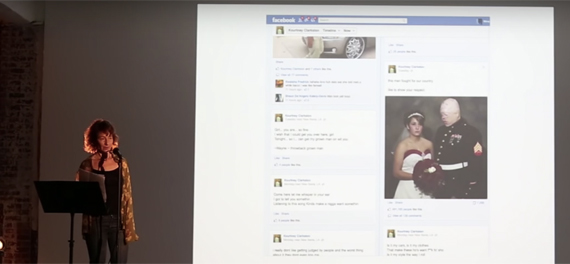Photojournalist Nina Berman wanted to bring more awareness to the “deep and lasting human cost of war,” shedding light on a topic that she felt many people were trying to hide. As a result, she photographed many, many veterans of war, including the deeply impactful photo featured in this story—that of a newlywed couple who “appear traumatized” with a very uncertain future. What happened next was the last thing she expected:
Like writers, photojournalists are expected to hold to a standard of ethics. There has always been a a moral code in photojournalism, both written and unwritten, yet the age of social media has made navigating these waters considerably more perilous. Even the smallest mistake can have a huge, unintended effect and there’s no way to really imagine the impact of a photo gone viral, especially if it emphasizes someone’s trauma. In this case, Berman chose to submit a very traumatic and shocking, yet intimate photo to a very public agency (World Press Photo) and then was shocked that the narrative of the photo soon went out of her control.
If this were just a case of a photographer losing control of the narrative, it would be one thing. But these are real people. In fact, one of the interesting things about Berman’s talk was that it left out the desires of the subjects in the photo. We’re left not knowing what (if any) permissions were given for publication of their photo. We don’t know why they allowed themselves to be photographed or what they wanted done with the photographs after they were taken. We don’t know their narrative. All we know is Berman’s agenda. Then we’re told that she “told the family not to talk to most of the press” and that once her photo was “stolen,” she tried to hide the photo and not tell the family. This might have all been done with the intent to protect the family, yet the ethics seem to be lacking from the beginning.
The take-away? There’s no real way to protect your content in this age of social media. Even the most profound of photos can be stolen for someone else’s agenda, used to sell sex or dating advice or a myriad of other uses. That means we need to scrupulously consider the possible impacts of our photos before submitting them to a public agency. Sometimes lives are at stake.
Like This Article?
Don't Miss The Next One!
Join over 100,000 photographers of all experience levels who receive our free photography tips and articles to stay current:







This is a very good article. Before the Internet, photographers had practically perfect control over their photographs. Today, as this article proves, photographers have hardly any control. All the shouting, contract waving, money thrown at attorneys cannot stop the ‘what is seen cannot be unseen’ legacy of Internet photos.